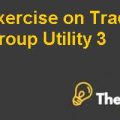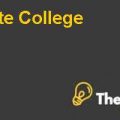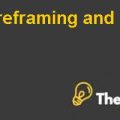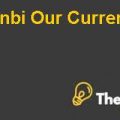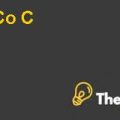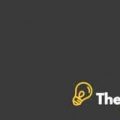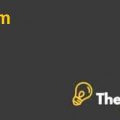
STAR APPLIANCE COMPANY B
PROBLEM STATEMENT:
Arthur Foster was concerned about the cost of capital after the debt funding company was acquired for expansion. Later on the company was facing risk when transaction with fund lenders was in progress. Arthur faced problem while developing the hurdle rate because was not sure about the valuation models as he knew only two methods namely, dividend discounting model (DDM) and price/earnings model (a.k.a. Implicit Cost of Capital). The company’s staffs were more focused on the capital assets pricing model however; Foster wasn’t aware of it. The discussion was on the accuracy of the hurdle rate that whether it was showing the accurate picture of the capital cost after it incorporated the debts. Some of the company’s employees were arguing on whether they had to use the constant hurdle rate for all the projects or all projects must be evaluated on different hurdle rates. Arthur Foster was focused on evaluating all the models to calculate the hurdle rates for future use.
The corporate treasurer’s assistant, Debbie Schofield was debating for the usage of the capital assets pricing model (CAPM) to calculate the different hurdle rates. She explained to Foster that, CAPM was the only tool which generated multiple hurdle rates for the valuation of the cost of capital and also generated rates that were associated with the risk level of individual projects. In order to measure the risks of the projects, capital asset pricing model has a component to measure the risk known as beta. In the CAPM model, beta represents the level of risk i.e. if it is lower than 1 then there will be lower risk associated with the cost of capital and if it is higher than 1 then it represents that higher risk is associated with the cost of capital. Proceeding, Foster made the analysis in order to calculate the cost of capital and viable result from this model which will be used in future. The following models are used to calculate the cost of capital for the Star Appliances:
Ω Dividend Discounting Model
Ω Price/Earning Model
Ω Capital Assets Pricing Model
Dividend Discounting Model:
Dividend discounting model is also known as Gordon growth model. It concentrates on discounting the equity value on the basis of per share price. It also defines that the share price is actually the present value of the cash flows. This model further divides into two categories. The following categories are defined below:
Zero growth model: In this growth model, the share price has zero growth. It means that over the time period, the share price will remain constant. In this model all the economic activities are defined under the umbrella in order to achieve equilibrium.
Constant growth model: This model defined that, per share price would grow at a constant rate and would give dividend on a constant rate.
The Gordon growth model formula is defined below:
In this formula the components are defined as:
P= current price of stock
g= constant growth rate for perpetuity return for an expected return or dividend.
D1= is the nest years dividend
R= cost of equity
To calculate the cost of equity, the formula is altered as per requirement. Alteration in formula is made below:
The above formula is applied in the case in which, dividend will grow at a constant rate of 4% along with a variation in the share price on a yearly basis. The dividend paid in 1984 was $1.91 which had increased from the previous year’s dividend. After incorporating the values in the formula, resultant comes out as the cost of equity.
Through this growth model, we get the cost of equity for several years as shown in the table below:
|
Star Appliances Cost of Equity using Dividend Discount Model |
||||||||
|
1979 |
1980 |
1981 |
1982 |
1983 |
1984 |
|||
| Dividend per Year | $ 1.64 | $ 1.70 | $ 1.75 | $ 1.80 | $ 1.85 | $ 1.91 | ||
| Current Market Price | $ 103 | $ 120 | $ 128 | $ 120 | $ 161 | $ 160 | ||
| Growth rate |
4.0% |
4.0% |
4.0% |
4.0% |
4.0% |
4.0% |
||
| Ke |
5.61% |
5.45% |
5.39% |
5.52% |
5.18% |
5.21% |
||
Price/Earning Model:
Price/Earnings ratios are another model, which are used to calculate the cost of capital. It is an equity multiple which calculates the............................
This is just a sample partial case solution. Please place the order on the website to order your own originally done case solution.
Surcharge for business UV2065 «Hide
by Diana Harrington, Casey S. Opitz Source: Darden School of Business 17 pages. Publication Date: March 28, 1991. Prod. #: UV2124-PDF-ENG

